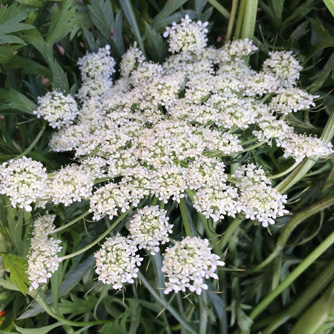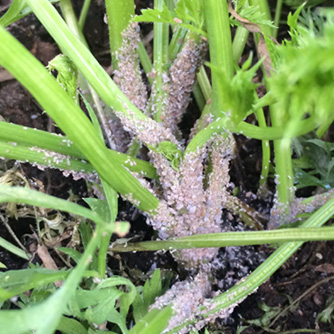Carrots
BackCarrots are one of our staple veggies but did you know they have been grown and harvested for around 5,000 years? Thought to originate from the Middle East they were initially grown for their seeds and foliage. Over time varieties with sweeter tasting taproots were developed and also eaten.
Typically we think of carrots as orange but heirloom varieties are also available in other colours including white, yellow and purple. Regardless of which type you grow they’re rich in antioxidants and vitamins A, B6 and K which means they’re definitely worth a place in your veggie patch.
How To Grow Carrots
Choose a sunny site and dig down about 20cm into the soil to ensure it is loose and crumbly. Turn in some old manure or compost at the same time (fresh manure may burn new shoots and cause distortion). Remove any rocks, old bits of wood or roots from the soil to also minimise roots forking or becoming distorted when they grow. Apply gypsum to improve heavy or clay soils.
Always sow seed directly into the soil as carrot seedlings do not transplant well. Carrot seed is small so mix with some sand to make it easier to spread them out when sowing. Be sure not to cover the seed with too much soil. Germination is slow (about 3 weeks) and seeds need constant moisture during this period so make sure the soil does not dry out. Watering with OCP eco-seaweed can help speed things up.

Freshly harvested carrots
When the plants are about 8cm high, thin out any which are growing closely together as each carrot needs enough room for the root to mature. A good trick is to mix radish and carrot seed in together with the sand when sowing. The radish germinate first, breaking the soil surface and make it easier for the carrots to poke through later. Radishes also mature earlier and help with the thinning job as you harvest them before the carrots.
Sowing Guide for Carrots
| Growing Zone | Sowing Time |
| Cool Zones | Spring, Summer |
| Mediterranean Zones | Spring, Summer, Autumn, Winter |
| Warm & Temperate Frost Free Zones | Spring, Summer, Autumn, Winter |
| Tropical & Subtropical Zones | Spring, Autumn, Winter |

Purple and orange carrots
Fertilising Carrots
Other than digging in manure (or compost) before sowing it’s best not to add more later on. Over applying manure can result in too much nitrogen causing excessive leaf growth and little root development. Instead apply OCP eco-aminogro and OCP eco-seaweed every 2-4 weeks which provides a better balance of nutrients.
Harvesting
Carrots take about 8 weeks for the root to start to thicken. Baby carrots will be ready to harvest in around 10 weeks. After that carrots can be harvested at any time according to the size you prefer. If left too long however they become tough and woody and are not as sweet in flavour.
Pest and Disease Problems for Carrots
Carrots are easy to grow once you’ve got them germinated and there are only a few problems which sometimes occur. Here’s what to watch for:
- Aphids – these sap suckers like to congregate at the base of the leaves so check the stems regularly and treat with an organic insecticide at the first sign of pests.

If let to go to seed carrot flowers will attract many beneficial insects
- Powdery mildew - this fungal disease will spread quickly and should immediately be controlled with an organic fungicide.
- Pythium – this soil borne pathogen attacks the carrot root and results in forking and small oval sunken brown spots. Difficult to control organically but ensuring soil is not too acidic is the first step. Aim for a pH of 6.5 to 7 and apply eco-flo dolomite or eco-flo lime if below 6.5. Practice crop rotation and boost organic matter in the soil to improve the balance of beneficial microbes. Regular soil drenching with OCP eco-seaweed can also help microbial activity.
- Root nematodes – these microscopic worm-like creatures also cause forking and root distortion. Impossible to remedy once the root is damaged so it’s best to focus on prevention. Improve organic content of soil and practice crop rotation.
- Viral infections – several different viruses can result in distorted, pale and/or weak foliage and root growth. Remove infected plants immediately. Often spread by aphids so it's another good reason to keep them under control.

If not thinned out you'll end up with twisted carrots
Other Problems with Carrots
Misshaped roots – A very common problem with carrots and there are several reasons the roots can end up twisted, forked and distorted. The main reason is due to pythium infection or nematode attack (as mentioned above) but it is more common for rocks and hard lumpy soil to be incorrectly blamed. By all means thoroughly cultivate the soil before sowing to remove this possibility but just don’t overlook pythium or nematodes. Fresh manure can also burn the tender root tip and fork the carrot so always use old manure. Sowing too close together and not thinning can result in twisted root growth.
Split carrots – Uneven and/or irregular watering can cause the roots to split. Check your watering habits and try to ensure the soil is kept evenly moist rather than drying out and then getting a surge of water.
Tough carrots – If harvested late or when close to going to seed carrots will have a tough core and bland taste. If you kept waiting for the root to thicken up (but it never did) check that you’ve sown them at the right time of year for your climate. If sown out of season carrots can bolt to seed without developing a thick root. If the timing was correct then a lack of nutrients could be to blame. Fortnightly applications of OCP eco-aminogro and OCP eco-seaweed will get the carrots fattening up quick smart!

Aphids attacking the base of carrots


